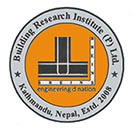
Today (NST)
Sunday, May 25, 2025
Smart Search
Please post in your Technical Queries, Comments & Suggestions to Contact us......
Advertisement

For Advertisement
|
|
| Subscribe to BREINS Sci-Tech |
| Visit this group |

Seismic Resistant Design
Damping in Structures
Another important aspect in Earthquake Resistant Design, ERD is Damping Characteristics of structures.
Damping is a phenomenon that makes any vibrating body/structure to decay in amplitude of motion (Fig-19) gradually by means of energy dissipation through various mechanisms.
In other words, gradual transformation of energy within the vibrating system is referred as Damping. Damping ultimately ceases the vibratory motion of structures. It could be compared with gradual application of brakes in a moving vehicle to stop it. Had there been no damping, motion of structures would have continued indefinitely. Thus Damping plays an important role in Structural Dynamics.
Fig-19 (Displacement Amplitude (y) plotted against Time (t) for a System undergoing Free Vibration. An Undamped Case (above) and Damped Case (below) respectively. An Undamped System maintained the constant Amplitude throughout the motion. Damped System showed the gradual decay in Amplitude with Time; ultimately ceasing of motion)
Energy of the vibrating system : Kinetic & Potential, at any instant (t) is continously transformed into Damping Energy by means of this physical process called Damping. Please refer the Energy Eqns (7) & (8) below applicable for any vibrating structural system excited by the earthquake energy. Eqn(7) is for elastic systems and (8) for those performing Inelastically.

Most of this energy transformation occurs at the micro level that arises from the thermal effect of repeated elastic straining of the material and from the internal friction when a solid is deformed. Besides these, in buildings, formation of cracks enhance damping. Opening and closing of cracks in concrete, friction at steel connections and friction between the frame structure and brick masonry walls majorly contribute in damping.
Damping is quite important in the sense that due to this significant amount of earthquake energy entered into the structure could be made dissipated through this mechanism; thereby preventing the structural system. Also, sooner the vibration of the structure ceases, lesser will be the damage. Inherently, reinforced concrete structures have low damping value, in the order of 5-10% of critical damping. Enhanced damping value protects the structural system.
Damping characteristics of a structure could be improved by addition of additional damping devices, Dampers; at the strategic locations within the structure; which could be very effective solution to dissipate earthquake induced forces. Dampers basically transfer vibrational energy entered in a structure to thermal energy; thereby preventing the main structural system from earthquake induced energy. Following presents the modern Damping devices;
Metallic Yielding Dampers
Visco Elastic Dampers
Viscous Fluid Dampers
Friction Dampers
Tuned Mass Dampers
Tuned Liquid Dampers
Active Tuned Mass Dampers
Modern high rise buildings do effectively use such dampers. World Trade Center in New York City had been built with 10,000 Visco-Elastic Dampers installed throughout the height of each tower. By increasing the effective damping of the structure, we can alter the response of the structure without significantly changing the natural frequency of the structure.